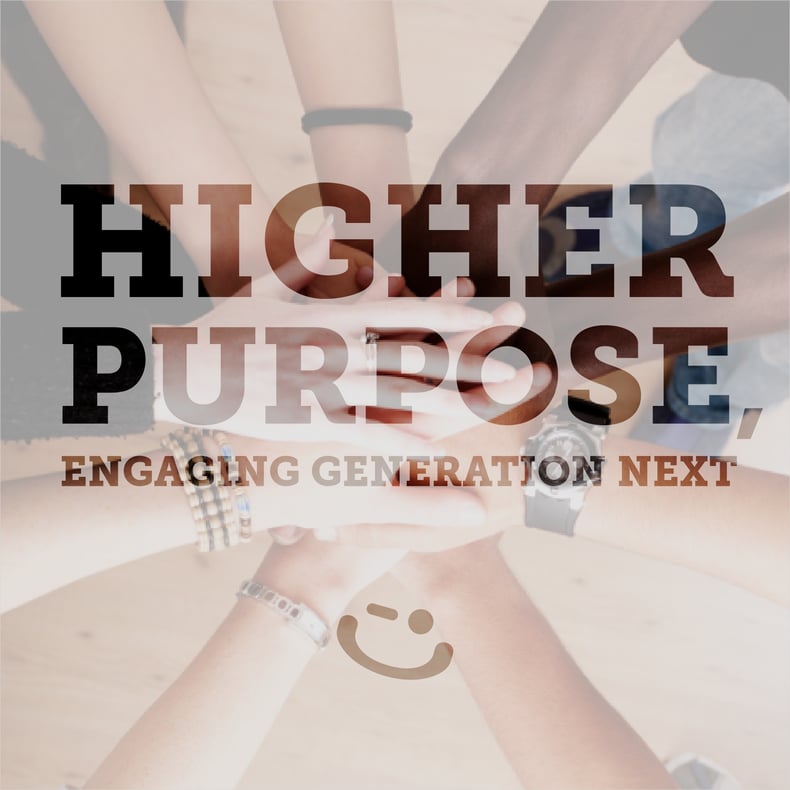
Millennials, “smartphone” dependent, unattached job-hoppers are advancing at an office near you. Statistically, these professionals aged 36 and younger are now the largest sector of the global workforce. By 2020 they will comprise more than half the globe’s workers.
Naturally, we want to understand how to attract, motivate and retain this generation. While we admire their tech-savvy and problem-solving, but we’ve all heard disgruntled stories about how challenging they are to traditional management styles. So what is at the core of the psyche for Generation Next, and how do we tap into their brilliance, and apparent challenges?
At Delivering Happiness we have been developing a framework for strongly sustainable workplace cultures since culture was considered taboo. It focuses on five key elements starting with values, layering in three levers of happiness including a sense of progress, connectedness with other workers, and a sense of control, then places the element of purpose front and center.
Learn more about the beginnings of our happiness framework:
With the rise of the Millennial generation, we're seeing that these elements are not just ‘nice’ to have, they are in-demand. Generation Next is willing to leave a high paying job for a position with more engagement and fulfillment; and businesses realize they must incorporate these elements to attract, motivate and retain the workforce of the future.
The good news is, these are the same elements we have worked with for years to improve overall workplace culture and employee happiness, regardless of background, ethnicity or, you guessed it, age. The impact on workplace culture and our happiness could be tremendous. Could the push and pull of Millennial needs be the impetus to take your organization to the next level?
Here are two concepts to consider in developing a thriving culture that attracts and motivates Millennials, but also, serves to unite and inspire the rest of your workforce.
1) Defining Purpose at Work
Millennials are well known for their desire for a higher purpose and deeper meaning in their work. They've seen recessions and global economic shifts under the highest speed of information ever known, along with the erosion of work-life-balance. It’s not surprising, Millennials require fulfillment on a deeper level than their predecessors. They are looking for the immediate impact of their work that allows them to envision their own future in this rapidly changing world.
Yet, they are the most disengaged sector of the workforce (71% disengaged). According to Gallup, less than one third of Millennials feel their organization’s mission or purpose gives meaning to their work. In the absence of meaning, they quickly disengage, often disrupting traditions like loyalty to team, support of coworkers or quality, creating a challenging dichotomy.
Leadership style is an important piece of the solution. Workers with a high sense of purpose often have leaders who motivate and inspire them for the future. But to engage Millennials sustainably, we also need to appeal to their individual sense of purpose, and help them align it to the organization’s mission. By doing so, we start at the source of personal motivation, and see how the individual’s role plays a part in the whole community’s ability to flourish. Gallup reveals, “you can increase employee engagement for this group from 14% to 67% by simply focusing on mission alignment.”
For the rest of us, welcoming this shift and moving toward what some are calling a Purpose Economy offers a tremendous opportunity for personal happiness and business results. What greater opportunity is there to rallying all of your workers around the higher purpose of your work in service to the world?
2) The Three Levers for Encouraging Purpose
The other area to consider in building a thriving Millennial culture is what we call the three happiness levers; progress, control and connectedness. These elements, identified from the science of happiness, tested and true, can be pulled like levers to build a happy, purposeful workplace culture. To read more details about each lever, click here.
As we move forward building practices to engage Millennials, it’s key to think about our long-term culture, and how we are uniting and elevating the rest of our employees. It starts with recognizing the momentous fact that the greatest motivator for Millennials is the same as it was for past generations: higher purpose. We can use the changes demanded in the area of purpose to elevate our entire ecosystem, from individuals to teams to the organization to our community of customers and partners. Start there, and identify behaviors and frameworks that can add in the levers of happiness.
The Delivering Happiness framework exists to help you raise the happiness and success of all your employees along with the new, wonderful and challenging Millennial generation.
So what will this generation’s impact be on your workplace culture? How will it serve to improve happiness and performance of all your employees? We’d love to hear from you.
Get a glimpse at the fundamentals to create a high-functioning, purpose-driven culture that will attract Millennials:

Currently the Culture Chief at DH, Sunny’s mission is to inspire others to live BIG by being true to themselves and following their purpose. She is passionate about realizing this through positive work cultures. Through her diverse journey Sunny has been a wellness researcher, saké trainer, ultra-runner, one of the world’s first happiness coaches and, finally, a global culture consultant.